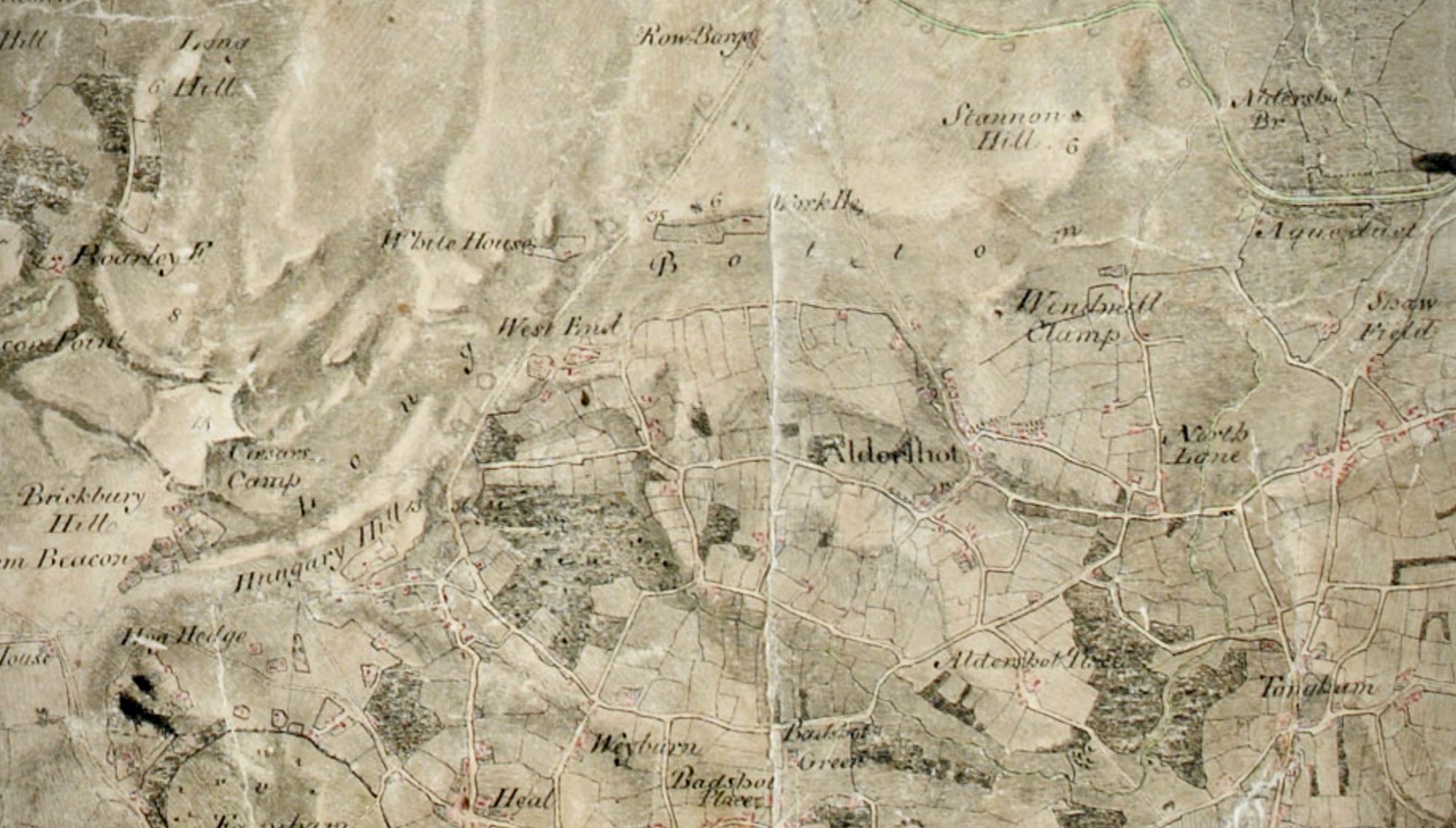There was good clay all around the course of the Blackwater, well displayed in a map by John Arrowsmith published in 1844.

Using the key taken from the map, there is distinction between the clay for brick (shown as blue/grey) and potter’s clay (pink). Whilst agriculture was the dominant activity, there had once been as many as four active potteries in Aldershot. That and brickmaking had provided employment for many centuries.
The name of Aldershot is omitted from the map, perhaps because of lack of national or regional significance, is located slightly to the west of Ash, which is marked. There has also been little attention given to the role of the Aldershot potters.
There are many interesting reports on the Heathland History Forum in which mention is made of the potteries in the area. The contributors there note that the Aldershot potters were “nearer to the sources of clay in Farnham Great Park and [also] in Tongham. So we may not yet be aware of the full story of Aldershot’s role in the Borderware pottery industry”.
The occurrence of this clay and the potteries along the Surrey/Hampshire border led the product to be known as ‘Borderware’, sometimes as ‘redware’ and also as Surrey whiteware, with Farnham Park and Tongham acknowledged as the source of the fine white clay. London and the South East were the ready market, with some early pieces found as far away as Jamestown.
“The term ‘Borderware’ developed as a description for the pottery produced in the border region of north-east Hampshire and west Surrey which became widely used from the 14th century onwards. Documentary evidence is known relating to potters working at the Farnborough Hill site which was a major centre of potting from at least the late 13 century until the early 20th century according to Jacqui Pearce. This pottery was utilitarian pottery produced for everyday domestic use and included cups, soup-bowls (porringers) and drinking jugs, cooking utensils, chamber-pots, candlesticks, money boxes and much else. The initial coarser Borderware briefly developed in the late 15th century into a tradition termed ‘Tudor Green,’ the name paying homage to England’s then-enthroned noble lineage. Tudor Green, while distinct from other Borderware, was according to historic and archaeological evidence produced in the same kilns. Jeremy Haslam estimated that this area later came to supply more than half of London’s pottery.”
